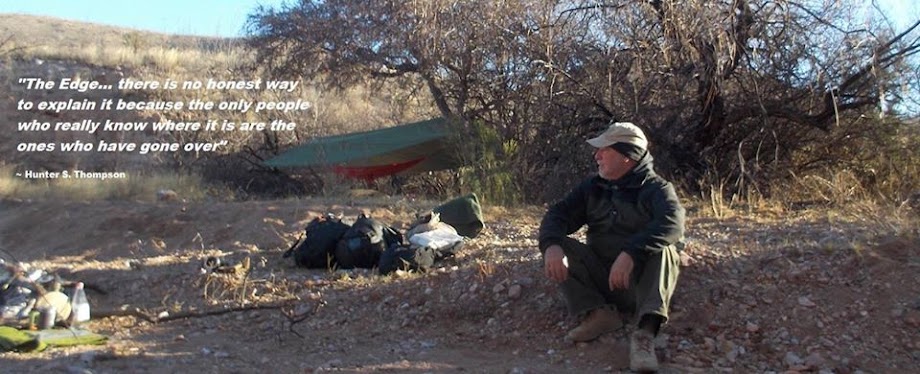About a million years ago, I was into horse culture. I had worked as a ranch hand and mule skinner all over the American west and wanted to learn as much as I could from real cowboys. I even flew to Hawaii to ride with the Peneolos on the big island, They are actually the 1st American cowboys. Anyway, I flew to Argentina and wandered around a bit then spent some time living with and learning from the Gauchos about riding, roping, throwing a bolo, and working with rawhide and leather.
These cats made all of their own horse tack from a bulls hide. These hides are hard as sheet metal so they leave them lying out over night so that the dew (or rain) will soften them, then in the morning over Mate` they can cut and work them. Joe Garza can attest to the hardness of rawhide and the necessity to work it while wet.
These hombres did all the rawhide work with their knives only, simultaneously slicing off a hunk of beef from the roast over the fire, or trimming a toe nail or lancing a boil on the horses back. Always in movement, they were never idle.
More recently, I was working as a teacher in Yopal, Colombia and there, the “Gauchos” are called Yaneros (spelling incorrect), and these guys all carried a simple chefs knife in a quality sheath. I think Eric Dhabliwala has one of them I sent him.

anyway, I found some words about Gauchos and their knives by Abel A. Domenech. Rather than me trying to write about them I will post it here for your convenience;
…Together with his horse, the knife, especially the facón or daga, was the distinctive tool/weapon of the gaucho, to the point of not himself existing without them. Gauchos were famous for the skillful use of knives and the use and abuse made of edged weapons during their duels. To understand this, we should bear in mind their background and epoch: these were solitary men. Very tough men raised in total solitude, almost without parental guidance. With no education, almost no religion, they spent their lives in the middle of the large plains in constant touch with nature, the danger of wild animals and Indians, the constant peril. They often spent long periods of time in solitude without seeing another human being and their only source of distraction or satisfying their very few extra needs was to reach one of the hundreds of pulperias distributed along the frontier.
The above excerpt to me sounds glorious.
See you on the trail!
Col Tomahawk


.jpg)
.jpg)

.jpg)


.jpg)



.jpg)

.png)







